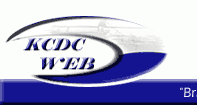
 |
||||||
This report is based on a satellite phone interview with Ted Green at 1 p.m.. on June 10, two days after he, his brother Scott and their travelling companions Chris and Bella Todd left from Stanley Mission. Historical information is drawn from "Canoeing the Churchill: A Practical Guide to the Historic Voyageur Highway" by Greg Marchildon and Sid Robinson. When we spoke, Ted and his companions were breaking camp from a lunch stop at Frog Portage, one of the most important spots along the early fur trade route. The day before (June 9), the foursome had paddled down Keg Lake, a water body that accounts for 14 km of the old voyageur highway, and over to Grand Rapids, where they camped for the night. The Cree name for the rapids is "Puskwutinaw Pawistik", which means "bald hill rapids". However, as Marchildon and Robinson point out in their book, this name makes no apparent sense: all of the visible hills have plenty of trees, with no bald spots visible. The name Grand Rapids, on the other hand, is very appropriate - extending for 600 metres, the rapids are, according to the authors, "an obstacle course of rocks, ledges and whitewater."
The weary paddlers found themselves "a two-star campsite" along the shoreline, with their tents pitched above them on a rocky ledge, and enjoyed a feast of fresh walleye before bedding down for the night. They saw a pair of bald eagles and a large nest, as well as signs of bear activity. There was, however, no evidence of what Kamil Pecher refers to in his book "Lonely Voyage". In 1971, Pecher was on a solo kayak trip when he stopped for a break at Grand Rapids. He claims that he found 40-centimetre-long footprints on the portage trail, and actually caught a glimpse of a sasquatch-like creature in the adjacent bush. The next morning, the foursome paddled across Trade Lake, which the Cree refer to (again for reasons cloaked in history) as "bald hill lake". The English name "Trade Lake" stems back to 1774 when Joseph Frobisher, one of three fur trading brothers from Montreal, reached present-day Frog Portage, located at the east end of the lake. Frobisher traded with the Indians he met there, and when news of his success spread, the lake became known as Lac du Traite (French for "Trade Lake"). The weather was again excellent for paddling, with a good wind pushing the canoeists from behind. By lunchtime, they had reached the famous Frog Portage. An explanation for this peculiar name was recorded by Alexander Mackenzie in the late 1700s. Mackenzie told of conflict between two rival native groups, one of whom was very spiteful of the other's ignorance in hunting beaver and then stretching and drying beaver pelts. As Mackenzie put it, "As a sign of their derision, they stretched the skin of a frog, and hung it up at the Portage."
Appropriately enough, this is also the first spot where Ted and his companions met up with other travellers - a group of commercial fishermen. The paddlers and the fishermen chatted for a while about activity on Trade Lake. While we were speaking, the canoeists were readying their boats to load onto the rail car stationed at the portage. Ted said he wasn't worried about the rail car's ability to handle their gear - he had just seen it haul away the fishermen's three Lund boats.
|
|||||||||||||||||||
|
|